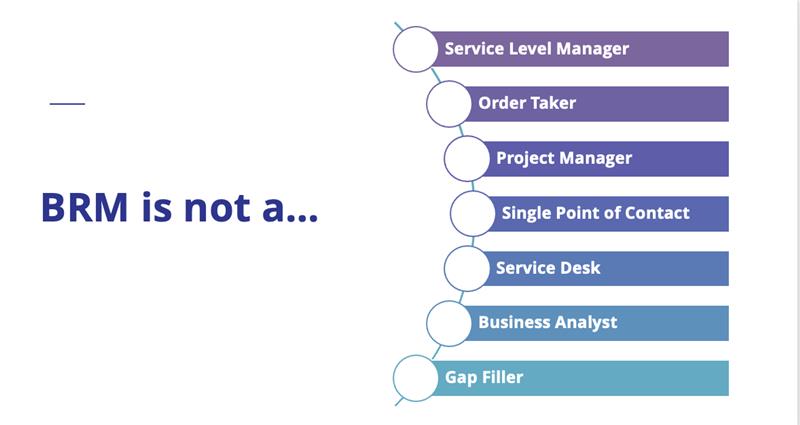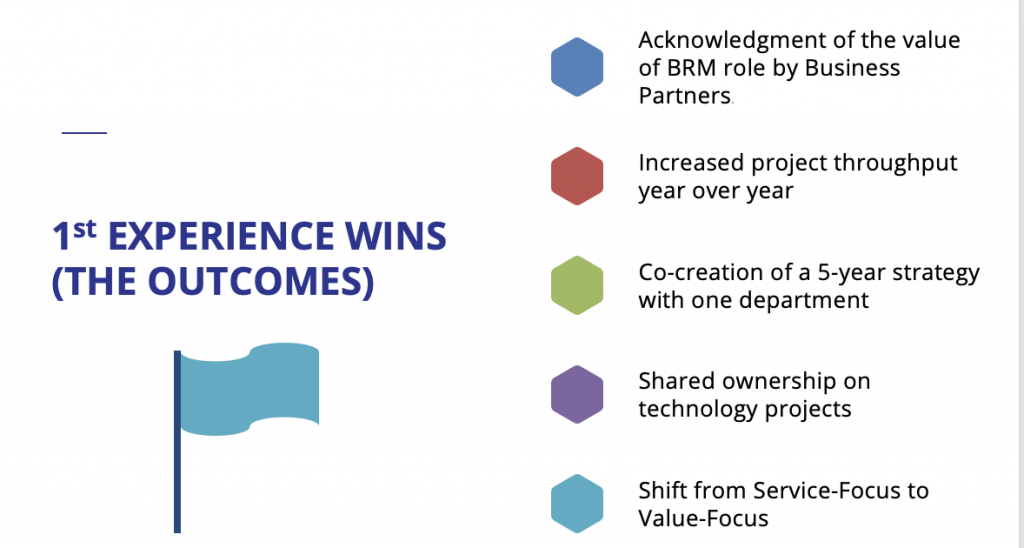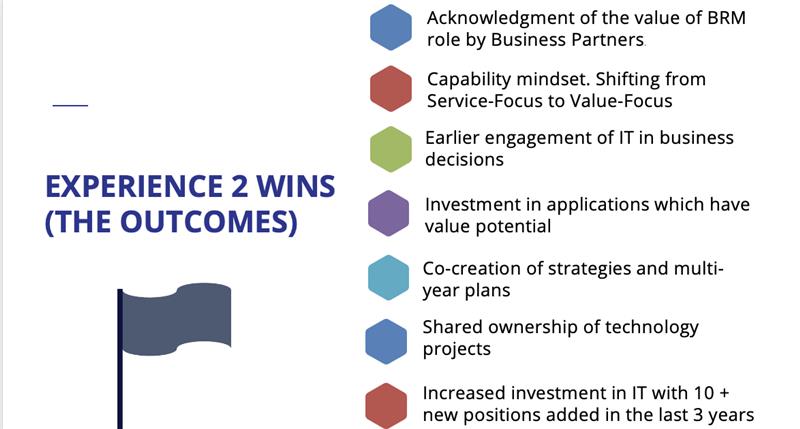Empowering Municipalities through Strategic Business Relationship Management

Municipalities today face a myriad of challenges that hinder their ability to drive meaningful transformation and deliver value to their communities. From transformation spending that fails to bring about real change to a non-collaborative culture and functional silos, the obstacles are numerous and complex.
In this context, the role of Business Relationship Management (BRM) becomes critical. At the 2024 MISA Ontario Annual Conference and Trade Show held in Niagara Falls in June 2024, BRM expert Helen Hiebert and IT Chapter Vice President Svetlana Sidenko shed light on how BRM can address these challenges and propel municipalities toward their strategic goals.
This blog is a summary of their compelling storytelling presentation.
Common Organizational Challenges in Municipalities
Helen’s second experience with BRM took place in a larger municipal setting with different dynamics and challenges. Here, she encountered a team that was initially unfamiliar with the broader BRM discipline and community. The IT team was relatively large, and the municipality had more employees, making the task more complex.
Despite these challenges, Helen saw an opportunity to foster business relationships and shape the demand for IT services to optimize value. The previous success with BRM principles emboldened her to introduce new tools and frameworks. Helen worked with the IT PMO to streamline and clarify the project intake process and life cycle, making it easier for stakeholders to understand and engage with the process.
The introduction of a new Project Portfolio Management (PPM) tool was another critical step. This tool helped in managing and prioritizing technology projects more effectively, ensuring that resources were allocated to initiatives that delivered the most value. Helen’s BRM team’s efforts led to earlier engagement of IT in business decisions, shifting the focus from reactive to proactive planning.
Through continuous training and expanding the BRM team, Helen’s second experience demonstrated the scalability and adaptability of BRM principles. The outcomes were impressive: acknowledgment of the BRM role’s value by business partners, a capability mindset shift, increased investment in IT, and a collaborative approach to strategy and multi-year planning.
Lessons from Helen’s Experience
The insights shared by Helen Hiebert and Svetlana Sidenko at the 2024 MISA Ontario Annual Conference highlight the critical role of BRM in empowering municipalities to overcome organizational challenges and drive strategic value. By fostering a culture of great relationships, aligning technology investments with business goals, and using strategic frameworks, BRMs can transform municipalities into more agile, innovative, and value-driven entities.
The pervasive challenges municipalities face—such as transformation spending without change, non-collaborative cultures, functional silos, cost-driven focuses, lack of shared ownership, poor communication, misunderstanding business needs, lack of frameworks for value recognition, uncommunicated organizational purpose, and outdated structures—underscore the necessity of BRM. By addressing these issues head-on, BRM provides a structured and strategic approach to overcoming these obstacles.
For municipalities embarking on the BRM journey, there is a wealth of resources and a supportive community ready to assist. The journey towards strategic BRM is not only achievable but also highly rewarding, offering the potential to drive significant value and fulfill the deeper purpose of the organization.
In conclusion, BRM is not just a role but a transformative capability that can unlock the full potential of municipalities. By embracing the principles and practices of BRM, municipalities can navigate their challenges, foster a culture of collaboration, and achieve their strategic goals.
About Svetlana Sidenko
As the Vice President of IT Chapter, a Montreal-based company specializing in IT consulting and IT best practices training, I am dedicated to transforming IT departments and organizations across industries. With over two decades of experience in IT management and governance, I’ve been at the forefront of guiding businesses towards their technology objectives and optimizing their digital operations.
As a lead trainer and coach for various IT certifications, including BRM, ITIL®4, CGEIT®, PMP®, and ISO 20000, I’ve had the honour of shaping the careers of hundreds of students and professionals. My commitment to excellence and in-depth knowledge of IT processes, frameworks, standards, and best practices has empowered my students to excel in their respective fields.




